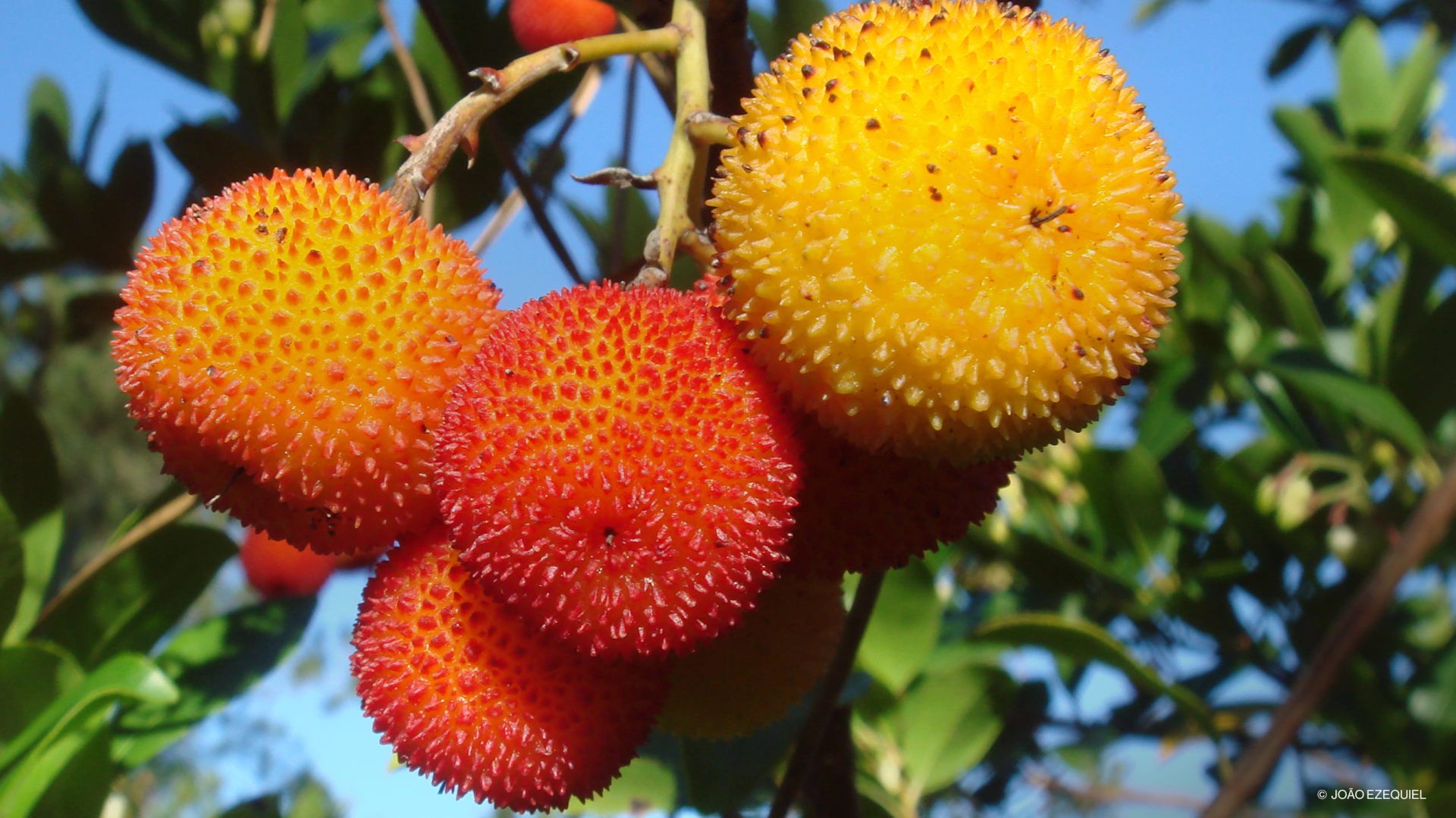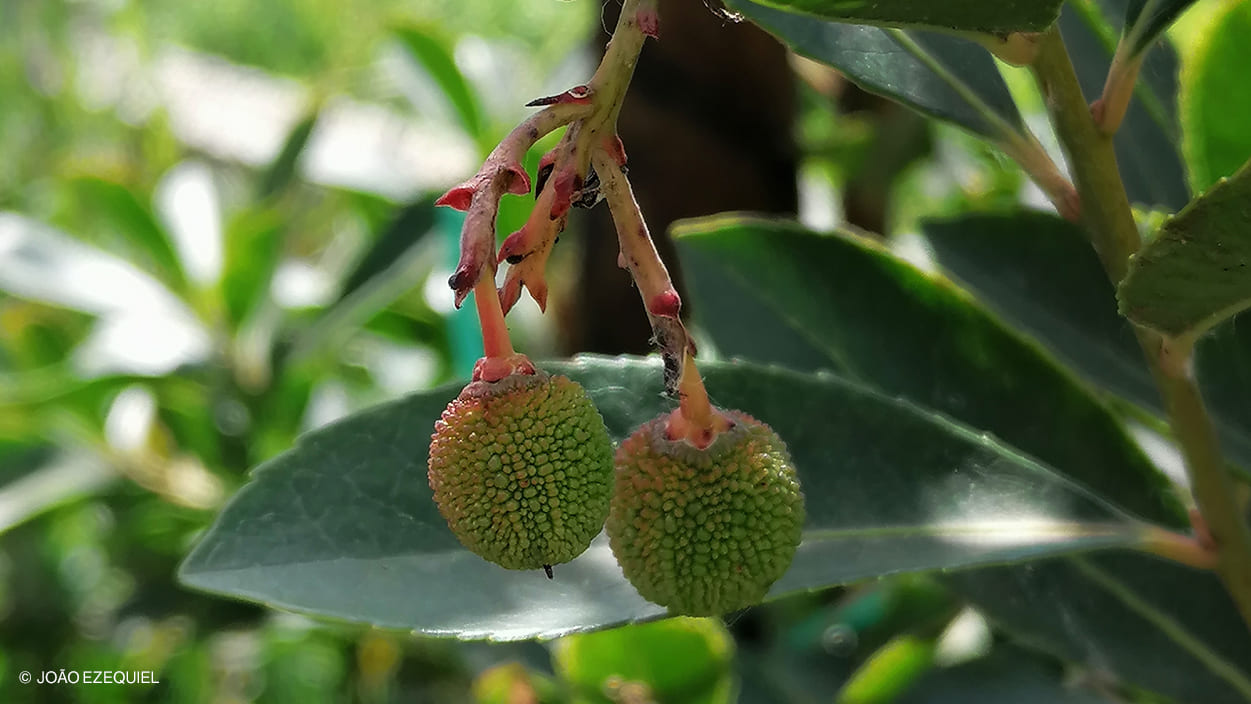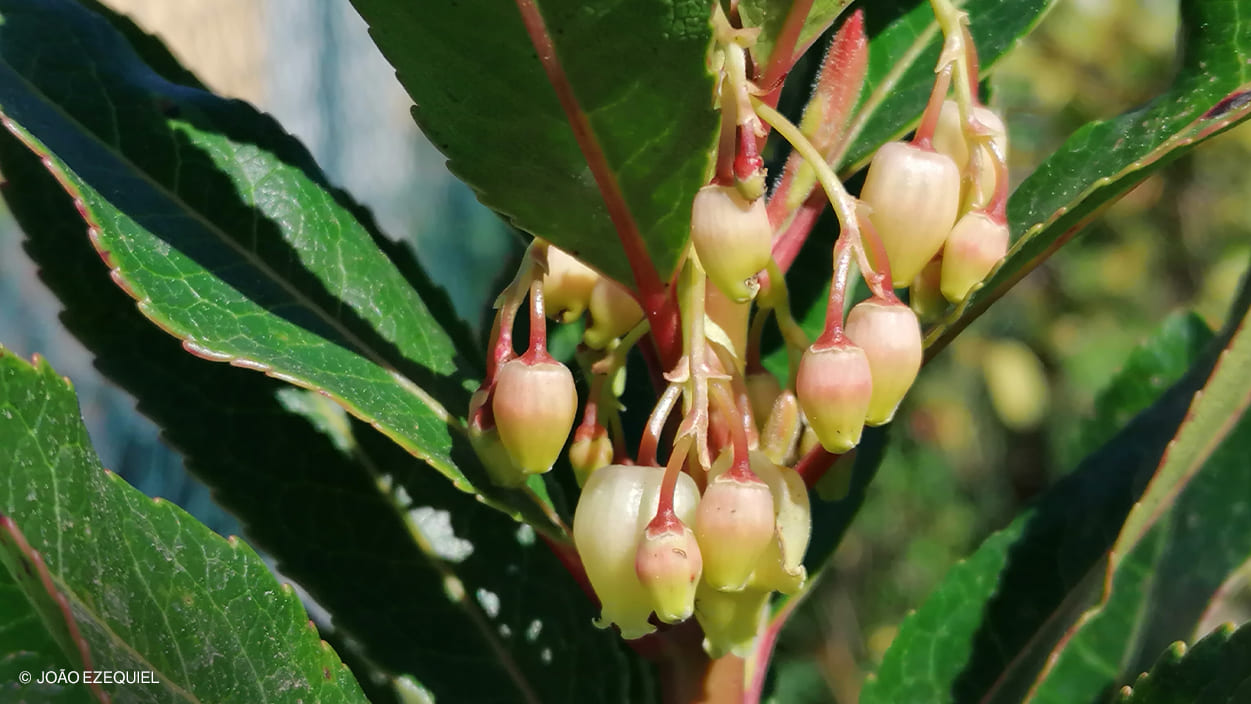A shrub or small tree typical of the Mediterranean region, the strawberry tree is much appreciated for its fruit, but it has also become valued for the ecological role it plays in the recovery of degraded ecosystems.
The strawberry tree (Arbutos unedo) is a shrub or small tree which usually grows up to five meters in height but can reach more than twice that size. Its leaves have a serrated edge, are dark green and shiny on the upper side, and are maintained throughout the year. The colour of this persistent leaf contrasts with the tone of the fruit, the arbutus, which turns yellow, orange and bright red as it ripens.
The round fruits have a rough surface and ripen in autumn, contrary to the cycle observed in most native species that grow in Portugal. One of the reasons for this lag is due to the long flowering period of the strawberry tree: the flowers, of a greenish-white or pinkish tone, only appear when the fruits of the previous year are ripening, and remain until February. Thus, flowers and fruits coexist in autumn – so when the fruit is picked, care must be taken not to damage the flowers.
Each fruit has between 20 and 25 seeds which are tiny (two to four millimetres). Aided by the vegetation covering the soil, these seeds germinate easily so that the plant grows throughout the country, although it is more common in the South and in inland parts. In these areas of Portugal, the strawberry tree has a long tradition and its fruits are highly appreciated in the production of brandies and liqueurs.
In addition to the value of the fruit in these drinks and its industrial use (food and cosmetics, for example), the wood and roots have also been used traditionally – the wood as fuel and the roots in charcoal production. The leaves and bark are rich in tannins and can also be used for tanning hides.
More recently, this pioneer species has seen its ecological value grow, which is due, in particular, to its resilience to fire and rapid regeneration capacity. This makes it an ally in the recovery of degraded ecosystems. With regard to this ecological aspect, it should also be noted that the strawberry tree is an important source of food for pollinators during autumn and winter, when there is less availability of flowers (food).
Despite being a species with a conservation status of Least Concern (according to the IUCN Red List), the strawberry tree is part of two habitats protected by the Habitats Directive, which are included in the Sector Plan of the Natura 2000 Network: it is the dominant species in subtype 5330 pt3 “Arbutus groves – Tall thickets dominated by Arbutus unedo” and codominant in several subtypes of the priority natural habitat 5230 “Arborescent thickets of Laurus nobilis”. It is still a frequent species in the shrub layer of habitat 9330 “Quercus suberforests”.





